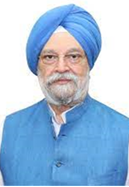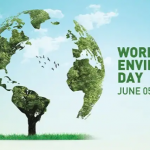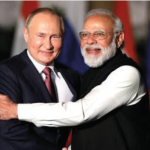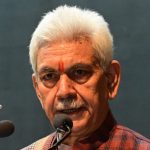A few days ago, India overtook Japan to become the world’s fourth-largest economy. Since 2014, under Prime Minister Modi’s leadership, India’s GDP has more than doubled to USD 4.3 trillion in 2025. This is the result of a decade-long strategy centred on reforms, resilience, and relentless pursuit of self-reliance.
India has not only become the world’s fastest-growing major economy but also a strategic force. The energy sector, integral to this rise, has undergone a structural transformation during the first year of Modi 3.0, building on ten years of foundational change.
More importantly, India’s growth rate of 6.7% in the last quarter places it on a fast trajectory that none of the other countries can remotely hope to achieve in the coming years.
India is now the third-largest energy and oil consumer, fourth-largest refiner, and fourth-largest LNG importer globally. With energy demand expected to grow two and a half times by 2047 and 25% of incremental global demand set to come from India, the roadmap is clear: energy security is development security.
Modi government’s energy strategy addresses the Energy Trilemma of availability, affordability, and sustainability through a four-pronged approach—diversification of sources and suppliers, expansion of domestic production, transition to renewables, and affordability.
In the upstream oil and gas sector, India’s exploration acreage has doubled from 8% in 2021 to 16% in 2025. With a goal of covering 1 million sq. km by 2030, the government aims to unlock 42 billion tonnes of oil and oil-equivalent gas. This expansion has been enabled by landmark reforms such as the reduction of ‘No-Go’ areas by 99%, streamlined licensing through OALP rounds, and attractive pricing incentives for new gas wells.
The revised gas pricing mechanism—linking prices to 10% of the Indian Crude Basket and offering a 20% premium for new wells—has enhanced gas availability for city gas networks and industrial usage. To reduce costs and accelerate monetisation, new revenue-sharing contracts allow shared infrastructure among E&P players.
Technological and geophysical efforts have complemented policy reforms. The National Seismic Programme, Mission Anveshan, AGG surveys, and Continental Shelf Mapping have expanded data and exploration confidence, especially in frontier basins like the Andamans, Mahanadi, and Cauvery.
ONGC and Oil India have together made over 25 hydrocarbon discoveries across Mumbai Offshore, Cambay, Mahanadi, and Assam basins in the last four years. Noteworthy among these are the Suryamani and Vajramani wells on the west coast offshore and the Utkal and Konark fields on the east coast deep waters. These discoveries add over 75 MMTOE and 2,700 MMSCM of gas to India’s reserves.
Collaborations with global majors are bearing fruit. ONGC’s partnership with BP is projected to boost output from Mumbai High by 44% for oil and 89% for gas. A data centre at the University of Houston now facilitates access to India’s exploration datasets for international investors.
Downstream infrastructure has seen parallel expansion. India now operates 24,000 km of product pipelines, nearly 96,000 retail outlets, and has significantly strengthened its strategic reserves and LPG storage. Over 67 million people visit petrol pumps daily—testimony to the scale and efficiency of India’s fuel supply ecosystem.
India’s city gas network has grown from 55 Geographic Areas in 2014 to 307 in 2025, with PNG connections up from 25 lakh to 1.5 crore and over 7,500 CNG stations in operation. Unified pipeline tariffs and city gas expansions have ensured affordable access even in distant states.
Biofuels have emerged as a cornerstone of India’s green strategy. Ethanol blending in petrol has surged from 1.5% in 2013 to 19.7% in 2025. Blending quantities have expanded from 38 crore litres to 484 crore litres. This saved 1.26 lakh crore in foreign exchange, reduced emissions by 643 lakh MT, and paid ₹1.79 lakh crore to distillers and over ₹1 lakh crore to farmers.
Feedstock diversification—ranging from molasses to maize—has created a robust ethanol ecosystem. Parallelly, the SATAT initiative has commissioned over 100 compressed biogas (CBG) plants and aims for a 5% CBG blending mandate by 2028. Central support for biomass procurement and CBG-pipeline connectivity is accelerating circular energy adoption.
Green Hydrogen has been given a massive thrust with 8.62 lakh tonnes of production and 3,000 MW of electrolyser tenders awarded. Oil PSUs are leading from the front—IOCL recently awarded a landmark 10 KTPA green hydrogen tender to Larsen & Toubro for its Panipat refinery. BPCL, HPCL, and GAIL are similarly progressing with large-scale hydrogen projects, while NRL’s green hydrogen unit in Assam is poised to become a first in the Northeast.
India’s natural gas pipeline network now spans over 25,000 km and targets 33,000 km by 2030. Strategic pricing reforms and inclusion of gas in the ‘No Cut’ category for transport and domestic segments are ensuring supply stability. Gas production has increased steadily from 28.7 BCM in 2020-21 to 36.4 BCM in 2023-24, with further growth projected.
No other country has so drastically altered its ‘Systems’ as India, as evinced by the Oilfields (Regulation and Development) Amendment Act 2024 has enabled hybrid leases, allowing renewables alongside hydrocarbons. DSF fields now operate under simplified contracts with minimal compliance burdens, unlocking marginal fields across basins. These sweeping policy reforms show that we are ready to tweak and do more for making India’s upstream sector as competitive as any in the world.
Through PM Gati Shakti, the Ministry of Petroleum and Natural Gas has digitally mapped over 1 lakh assets and pipelines. Integration with the National Master Plan ensures real-time project visibility and synergy across ministries. Key projects like the Indo-Nepal pipeline and Samruddhi Utility Corridor have benefitted from route optimisation and cost savings of over Rs 169 crore.
Affordability remains central. Despite global LPG prices rising by 58%, PMUY beneficiaries pay Rs 553 per cylinder, supported by targeted subsidies and compensation to oil companies. Fuel prices in India have been kept stable through excise cuts, insulating citizens from volatility seen in neighbouring countries.
Eleven years into PM Modi’s transformative leadership, India’s energy sector is no longer defined by anxiety. It is now marked by confidence, self-reliance, and strategic foresight. Energy is not just a commodity, it is a catalyst for sovereignty, security, and sustainable development.
(The Author is Union Minister of Petroleum and Natural Gas in the Government of India. Courtesy: PIB)










